As the air turns crisp and the leaves transform into brilliant hues of red, orange, and gold, photographers eagerly seek to capture the beauty of fall. This ultimate guide to fall foliage photography will provide expert tips and techniques to help anyone enhance their skills while photographing this stunning season. From selecting the right equipment to finding the best locations, it offers essential insights for both beginners and seasoned photographers.
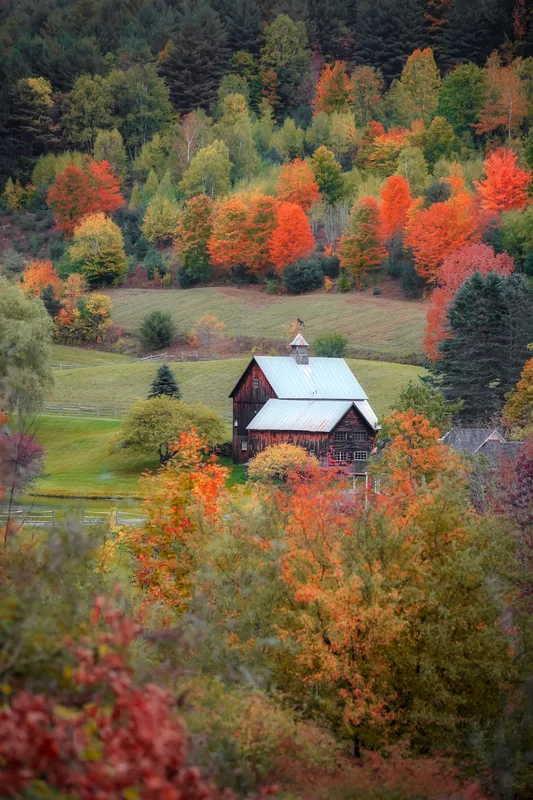
Understanding the importance of lighting and composition is crucial when shooting fall colors. Proper timing, such as the golden hour, can make a significant difference in the vibrancy of the images. With the right approach, anyone can create captivating photographs that showcase the essence of autumn.
This guide will also explore various editing techniques to enhance the colors and textures in fall foliage photos. By mastering these skills, photographers can turn picturesque landscapes into striking works of art. Readers will gain valuable knowledge to make the most of their fall photography endeavors.
Understanding Fall Foliage
Fall foliage captivates many with its vibrant colors. The changes in leaf coloration are influenced by various scientific factors, regional climates, and peak viewing times, essential for photographers seeking to capture stunning images.
The Science Behind Leaf Color Change
Leaf color change in fall is a result of a complex interplay of pigments, temperature, and sunlight. The main pigments include chlorophyll (green), carotenoids (yellow and orange), and anthocyanins (red and purple). As days shorten and temperatures drop, chlorophyll breaks down, revealing the other pigments.
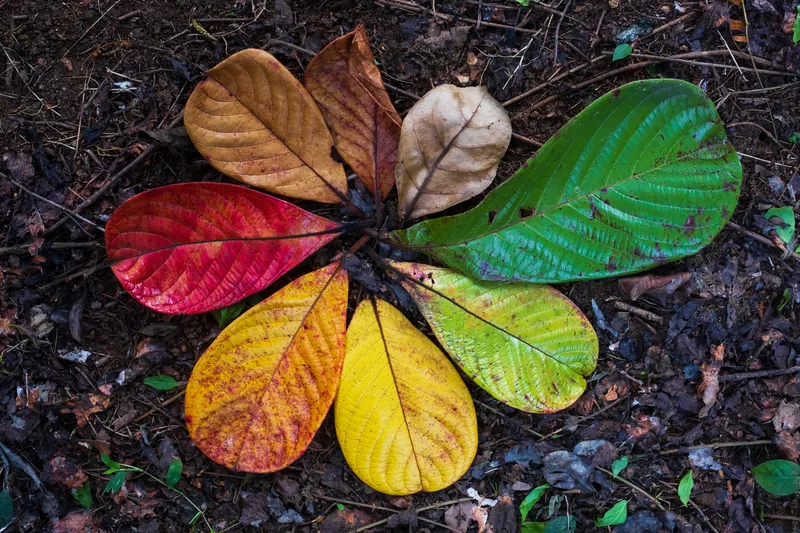
Environmental conditions play a critical role. A warm, wet summer promotes chlorophyll production, while sunny autumn days combined with cool nights can enhance anthocyanin production. Regions with these optimal conditions may showcase more vibrant red hues.
Peak Foliage Forecasting
Timing is crucial for fall foliage photography. Peak foliage typically occurs between late September and mid-October in many areas across North America. Factors influencing peak times include temperature, rainfall, and geography.
Monitoring local weather conditions can help predict peak times. Many regional forecasts provide updates on foliage progression. Websites and apps dedicated to foliage tracking often detail real-time observations to assist photographers in planning their outings. Knowing when peak foliage occurs in specific areas maximizes opportunities for capturing the best images.
Regional Differences in Fall Colors
Regional climates significantly affect fall colors. For example, New England is famed for its brilliant reds and oranges, largely due to native sugar maples. Conversely, the Midwestern U.S. may display more yellow hues from oak and aspen trees.
Variability exists even within regions. Factors such as soil type, altitude, and local humidity influence color saturation and hue. The southern U.S. tends to have subtler colors due to a longer growing season. Understanding these regional distinctions enables photographers to choose locations that align with their artistic preferences.
Photography Equipment Essentials
Selecting the right equipment is crucial for capturing the vibrant beauty of fall foliage. Key items include a camera, suitable lenses, stability gear, and filters to enhance the colors.
Choosing the Right Camera
A camera with manual settings allows for greater control over exposure and aperture, essential for autumn photography. DSLRs and mirrorless cameras are popular choices due to their versatility and image quality.
Key Features:
- Sensor Size: Larger sensors capture more light, improving detail and color.
- Megapixels: More megapixels provide larger images, benefitting large prints.
- Low-Light Performance: Important for capturing images during the golden hour.
Several brands stand out, including Canon, Nikon, and Sony, offering various models that cater to different experience levels.
Lenses for Capturing the Essence of Autumn
The choice of lens can significantly impact the final image. Prime and zoom lenses are frequently favored for fall photography.
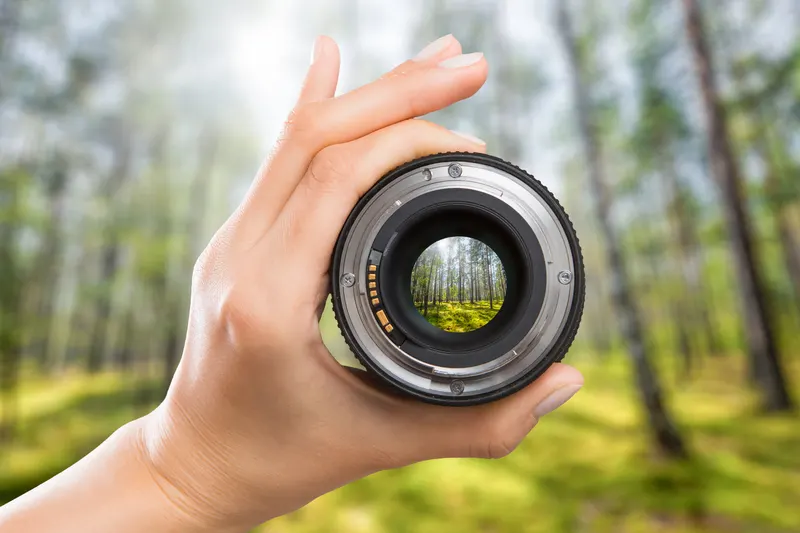
Recommended Lenses:
- Wide-Angle Lens (16-35mm): This lens captures expansive landscapes and large scenes filled with foliage.
- Telephoto Lens (70-200mm): Great for isolating details like single trees or clusters of colored leaves.
- Macro Lens: Ideal for close-up shots of leaves and textures.
A versatile lens kit will enable photographers to adapt to varying compositions and scenes.
Tripods and Stability Gear
Using a tripod provides stability, which is essential for sharp images, especially in low-light conditions. It also allows for longer exposure times without camera shake.

Tripod Features:
- Height Adjustment: A good tripod should allow adjustment for low or high angles.
- Weight: Lightweight materials, such as carbon fiber, are preferable for portability.
- Head Type: A ball head or pan-tilt head offers flexibility when positioning the camera.
Additional stability gear, like a bean bag or stabilizer, can enhance shooting in uneven terrain or windy conditions.
Filters to Enhance Fall Colors
Filters can dramatically alter the appearance of photos. They enhance color saturation and reduce glare, allowing for richer autumn tones.
Types of Filters:
- Polarizing Filter: Reduces reflections and enhances color contrast, making foliage appear more vibrant.
- ND Filter (Neutral Density): Allows for longer exposure times without overexposing images, perfect for capturing movement, like flowing water amidst the fall backdrop.
Understanding how to use these filters effectively can elevate the quality of fall foliage photography.
Camera Settings for Fall Foliage
Capturing the vivid colors of fall foliage requires an understanding of specific camera settings. Adjusting light exposure, white balance, and focus modes plays a critical role in achieving stunning photographs.
Understanding Light and Exposure
Natural light varies throughout the day, affecting how colors appear in photographs. Early mornings and late afternoons generally provide the softest light, enhancing the warm tones of autumn leaves.
Photographers should consider using the exposure triangle:
- Aperture: A wider aperture (f/2.8 to f/5.6) creates a shallow depth of field, isolating subjects and blurring backgrounds.
- Shutter Speed: For bright days, faster shutter speeds (1/250s or faster) prevent overexposure, while slower speeds may work on cloudy days.
- ISO: Keep ISO low (100-400) for the best image quality. Only increase in low light situations.
Experimenting with exposure compensation can also help achieve the desired brightness or darkness in images.
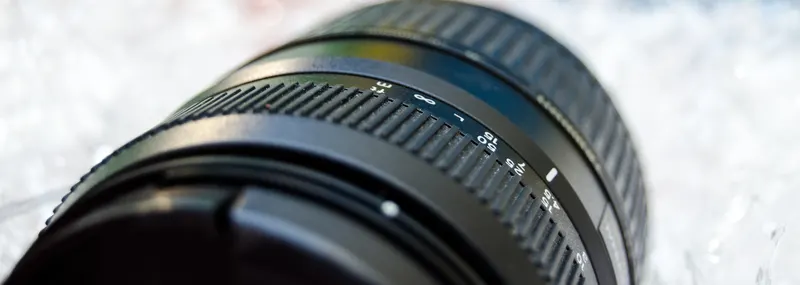
White Balance and Color Temperature
Correct white balance ensures that the rich colors of fall foliage are accurately represented. In shade, foliage may appear cooler; using the Shade setting on the camera will bring out warmth.
Adjust the color temperature manually for precision:
- Daylight: 5000K-6000K captures warm tones.
- Cloudy: 6000K-7000K emphasizes warmth further.
- Shade: 7000K-8000K can enhance golden hues.
Always shoot in RAW if possible, as this format allows more flexibility in post-processing to correct colors.
Focus Modes for Sharp Images
Selecting the correct focus mode is vital to capturing sharp images of fall foliage. Autofocus (AF) options include:
- Single-Point AF: Ideal for precise focus on a specific leaf or detail.
- Zone AF: Useful when the subject is in a busy scene, allowing for more flexibility.
- Continuous AF: Best for moving subjects, like falling leaves being swayed by the wind.
For landscapes, using manual focus can provide better control, especially in low-light situations. Employing a tripod will stabilize the camera and reduce motion blur, ensuring crisp details throughout the scene.
Composition and Perspective
Effective composition and perspective are crucial for capturing the essence of fall foliage. By paying attention to framing, utilizing both foreground and background elements, and carefully selecting perspectives, photographers can create compelling images that showcase the vibrancy of autumn.
Framing Stunning Fall Scenes
Framing is an essential technique in photography that guides the viewer’s eye to the subject. Using natural elements like branches, leaves, or rock formations can create a pleasing border. This method adds depth and context to fall foliage images.
Photographers can also employ the rule of thirds by positioning key elements along imaginary grid lines. For instance, placing a bright tree off-center allows the surrounding color to complement the subject. Experimenting with different angles and heights enhances the overall aesthetic, yielding eye-catching results.
Utilizing Foreground and Background
Incorporating both foreground and background elements enriches a photograph. The foreground can feature fallen leaves, a stream, or structural elements like fences. This creates a sense of depth, encouraging viewers to explore the entire image.
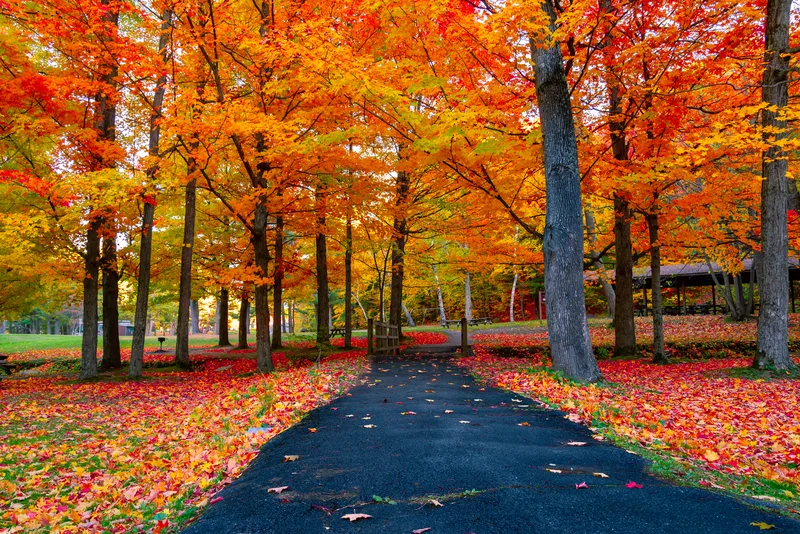
Backgrounds are equally important. A blurred, colorful hillside can provide a striking contrast to crisp foreground details. Photographers should consider aperture settings that achieve desired focus, enhancing the fall scene’s vibrancy.
Perspective and Depth in Landscape Photography
Perspective plays a pivotal role in how fall foliage is illustrated. Low angles can emphasize towering trees and their intricate branches, making them appear more majestic. Alternatively, high vantage points offer sweeping views of vast landscapes filled with colorful patches.
Depth can be achieved through layering. Including elements at varying distances, such as a path leading into a grove of trees, invites viewers to journey through the scene. Crafting compositions with intentional perspective leads to engaging and dynamic images that celebrate the beauty of autumn foliage.
Creative Techniques in Fall Photography
In fall foliage photography, employing creative techniques can elevate images beyond traditional captures. Two effective approaches are highlighting reflections in water features and incorporating motion for a dynamic effect.
Capturing Reflections and Water Features
Reflections can add depth and interest to fall photographs. Lakes, ponds, and rivers become natural mirrors for vibrant foliage. Photographers should aim for early morning or late afternoon light, which softens shadows and enhances colors.
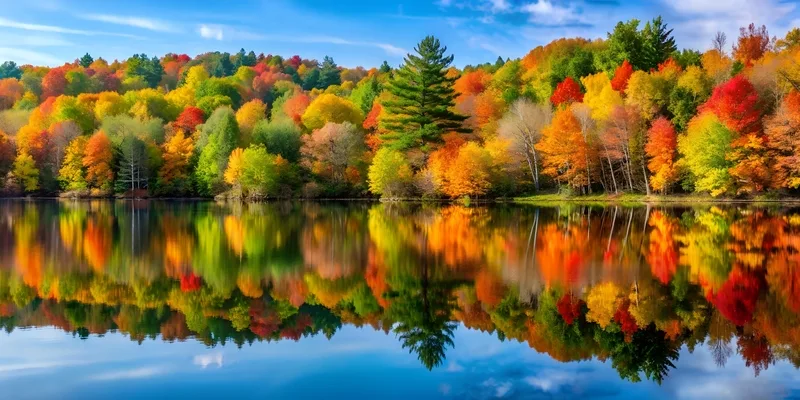
Positioning oneself at a low angle can maximize the reflection effect. A slight tilt of the camera may create a more dramatic juxtaposition between the trees and their mirrored counterparts. Using a polarizing filter can further reduce glare and intensify colors.
To enhance compositions, try including surrounding elements, like rocks or branches, framing the reflection. This technique can draw viewers’ eyes to the focal point and encourage them to explore the entire photograph.
Using Motion for Artistic Effect
Incorporating motion can transform a static image into an engaging visual narrative. Techniques such as panning or slow shutter speeds produce unique artistic effects, particularly when capturing moving leaves or branches.
Panning involves tracking a moving subject while using a slower shutter speed. This creates a sharp subject with a blurred background, emphasizing motion.
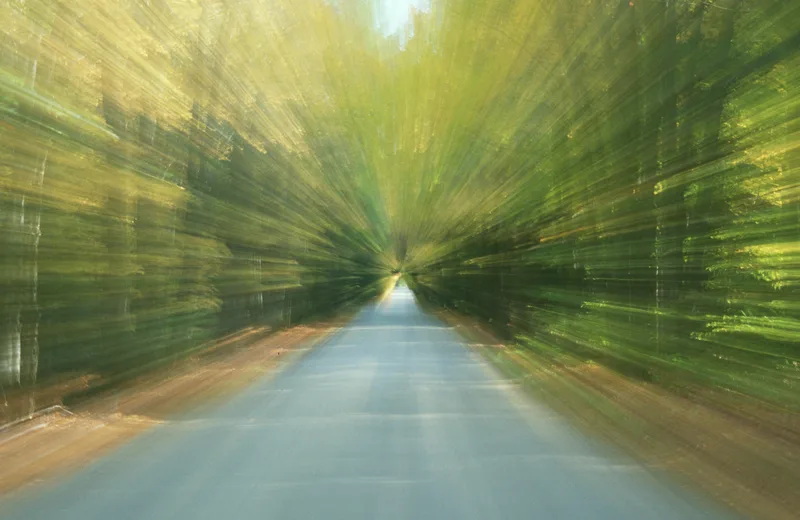
Alternatively, slow shutter speeds allow photographers to capture the gentle swaying of trees or falling leaves, creating a sense of movement. To avoid overexposure, adjustments to aperture and ISO settings may be necessary.
Experimenting with these techniques can deliver compelling fall imagery that conveys the season’s dynamic nature.
Post-Processing Tips for Fall Colors
Post-processing can significantly enhance the vibrancy and richness of fall colors. Key techniques include color correction, enhancement for clarity, and attention to detail, allowing for the best representation of autumn’s beauty.
Color Correction and Enhancement
Color correction is essential to achieve accurate and vibrant fall colors. Begin by adjusting the white balance to eliminate any unwanted color casts. For autumn scenes, slightly increasing the temperature can warm the image.
Steps for color enhancement:
- Use vibrance settings: This selectively enhances colors without oversaturating skin tones, a common issue in landscape photography.
- Adjust saturation: Carefully increase saturation for leaves while ensuring other elements remain natural.
Experimenting with the HSL (Hue, Saturation, Luminance) panel can fine-tune individual colors. For instance, enhancing yellows and oranges will make the foliage pop, while reducing greens can create a more autumnal feel.
Editing for Clarity and Detail
Clarity adjustments enhance mid-tone contrast, giving images depth. Utilize the clarity slider judiciously to avoid an unnatural appearance.
Techniques for improving clarity and detail:
- Sharpening: Apply local sharpening to foliage and textural elements to bring out detail. Use masking to prevent noise in smoother areas.
- Noise reduction: Photographs shot in lower light can benefit from noise reduction, maintaining natural textures.
Applying these techniques ensures that the intricate details of leaves, bark, and surrounding elements are crisp and clear. The goal is to capture the essence of fall without compromising the image’s integrity.
Practical Advice for Outdoor Photography
When photographing fall foliage, practical considerations can significantly enhance the quality of images. Understanding weather factors and how to scout locations effectively is essential. Each aspect contributes to achieving stunning photographs.
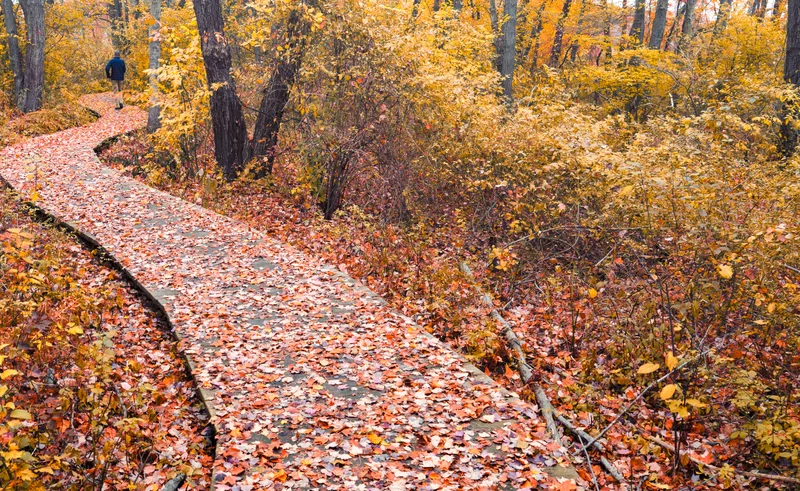
Weather Considerations and Protecting Your Gear
Weather conditions play a vital role in outdoor photography. Overcast days can offer soft, diffused lighting, reducing harsh shadows. Bright sunlight, on the other hand, may create vibrant colors but can also lead to glare.
It is essential to protect equipment from possible rain or moisture. Using weather-resistant gear or employing rain covers can safeguard cameras and lenses. Additionally, constantly monitor local forecasts to adapt plans as necessary. Packing microfiber cloths can help in quickly addressing moisture or dust on the lens.
Location Scouting and Timing
Successful fall foliage photography often relies on proper location scouting. Identify areas known for colorful trees, scenic views, or unique landscapes. Online resources, local guides, or photography forums can provide insights into the best spots.
Timing is equally important. Sunrise and sunset yield the best light, enhancing colors and providing striking contrasts. Early morning may deliver mist that adds depth to the photos. Always consider the peak foliage times, which can vary by region, to maximize the autumn colors in images.
Ethical and Environmentally Responsible Photography
Photography in natural settings requires care and respect. Photographers should prioritize the environment to preserve the beauty they capture.
Guidelines for Responsible Photography:
- Stay on Trails: Avoid trampling vegetation. Stick to marked paths to protect ecosystems.
- Respect Wildlife: Keep a safe distance from animals. Do not disturb their habitats or engage in baiting.
- Leave No Trace: Take all trash with you and avoid leaving any markers or impacts on the landscape.
Best Practices:
- Use Digital Tools: Focus on editing software rather than altering landscapes directly.
- Educate Others: Share knowledge about ethical practices with fellow photographers. Encourage a culture of responsibility.
Local Regulations:
- Follow Guidelines: Be aware of specific rules in protected areas. National parks often have strict regulations in place.
- Obtain Permits: For certain locations, ensure necessary permissions are acquired before shooting.
Being mindful of the environment enhances the photography experience. This approach not only benefits the photographer but also supports the preservation of nature for future generations. Remember, the beauty of fall foliage should be enjoyed without causing harm.
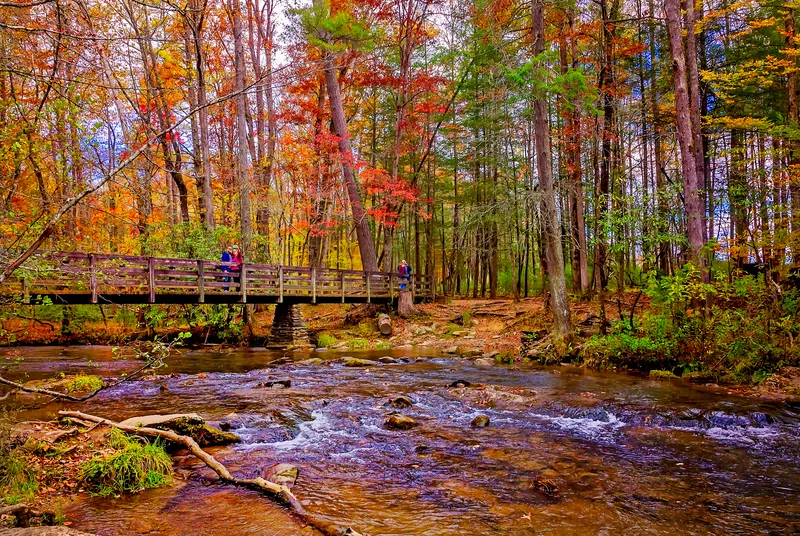
Sharing and Showcasing Your Work
Promoting fall foliage photography involves utilizing various platforms and presentation methods. He or she should choose options that align with their style and goals to connect with a wider audience.
Online Platforms for Exposure
Social media platforms are essential for showcasing photography. Sites like Instagram, Facebook, and Pinterest enable users to share high-quality images and connect with others who appreciate nature photography.

Key strategies for engagement:
- Use relevant hashtags: Tags like #FallFoliage or #AutumnColors attract targeted viewers.
- Engage with community: Commenting on and liking others’ work builds relationships.
- Join photography groups: Being part of dedicated forums on Facebook or other sites can provide feedback and additional exposure.
Additionally, dedicated photography platforms such as 500px or Flickr offer a space for enthusiasts to share work and gain recognition among peers.
Print and Presentation Ideas
Presenting photography in print can elevate its impact. He or she can consider options such as:
- Framed prints: High-quality, framed images can make stunning centerpieces in homes or galleries.
- Photo books: Compiling a seasonal collection in a professionally printed book is a thoughtful way to share work.
- Calendars: Creating a wall calendar featuring their best fall shots provides utility while showcasing art.
These tangible formats not only spread awareness but also create lasting impressions. Participating in local exhibitions can offer further visibility to their work.
